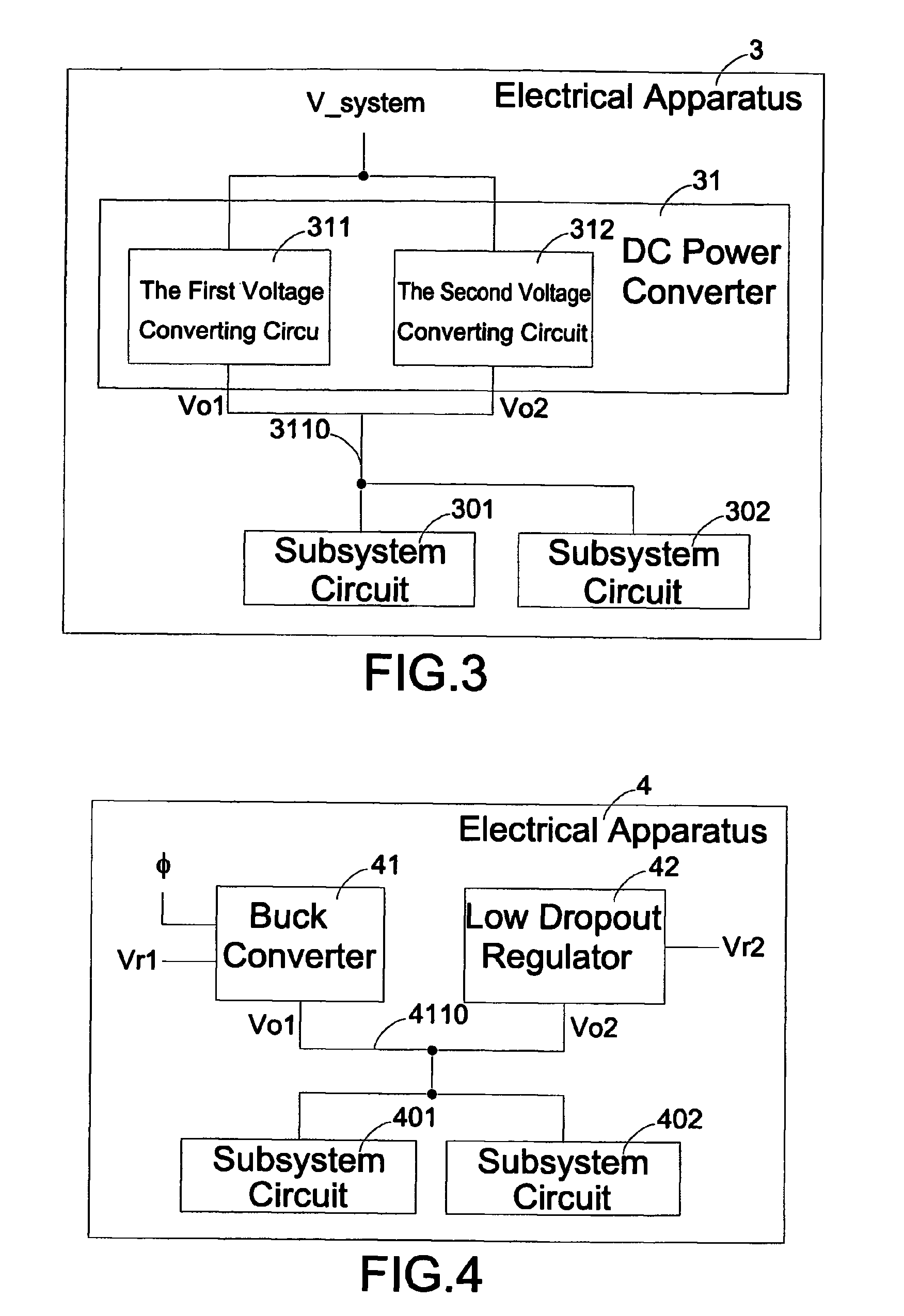DC power converter and mode-switching method
a power converter and mode-switching technology, applied in the direction of power conversion systems, process and machine control, instruments, etc., can solve the problems of increasing power loss, unsatisfactory conversion efficiency, and rendering inadequate conversion efficiency
- Summary
- Abstract
- Description
- Claims
- Application Information
AI Technical Summary
Benefits of technology
Problems solved by technology
Method used
Image
Examples
first embodiment
[0026]To better understand technical details of the present invention, a first embodiment according to the invention shall be illustrated with reference to FIG. 4. A buck converter 41 is implemented as the foregoing first voltage converting circuit 311, and an LDO 42 is implemented as the foregoing second voltage converting circuit 312. Circuits of the buck converter 41 and the LDO 42 are as shown in FIGS. 2(a) and 2(b). When an electronic apparatus 4 is in an active mode, the buck converter 41 is activated to output a first output voltage Vo1 at the output end 4110 for the subsystem circuits 401 and 402 based on a first reference voltage Vr1. The first output voltage Vo1 has a linear relationship with the first reference voltage Vr1. At this point, the LDO 42 detects that the voltage at the output end 4110 is larger than the second reference voltage Vr2, which is the foregoing threshold Vt, and therefore the LDO 42 becomes inactive to allow the buck converter 41 to provide the subs...
second embodiment
[0028]To more explicitly express technical details according to the invention, a preferred second embodiment shall be described with reference to FIG. 7. A first buck converter 71 is implemented as the foregoing first voltage converting circuit 311, and a second buck converter 72 is implemented as the foregoing second voltage converting circuit 312. When an electronic apparatus 7 is in an active mode, the first buck converter 71 outputs the first output voltage Vo1 at an output end 710 for subsystem circuits 701 and 702 based on the first reference voltage Vr1. The first output voltage Vo1 has a linear relationship with the first reference voltage Vr1. When a comparator 73 detects that a voltage at the output end 710 is larger than the second reference voltage Vr2, the second buck converter 72 stops operating. However, when the electronic apparatus 7 enters a quiescent mode, for that the subsystem circuits 701 and 702 no longer require large current and voltage, the first buck conve...
PUM
 Login to View More
Login to View More Abstract
Description
Claims
Application Information
 Login to View More
Login to View More - R&D
- Intellectual Property
- Life Sciences
- Materials
- Tech Scout
- Unparalleled Data Quality
- Higher Quality Content
- 60% Fewer Hallucinations
Browse by: Latest US Patents, China's latest patents, Technical Efficacy Thesaurus, Application Domain, Technology Topic, Popular Technical Reports.
© 2025 PatSnap. All rights reserved.Legal|Privacy policy|Modern Slavery Act Transparency Statement|Sitemap|About US| Contact US: help@patsnap.com



